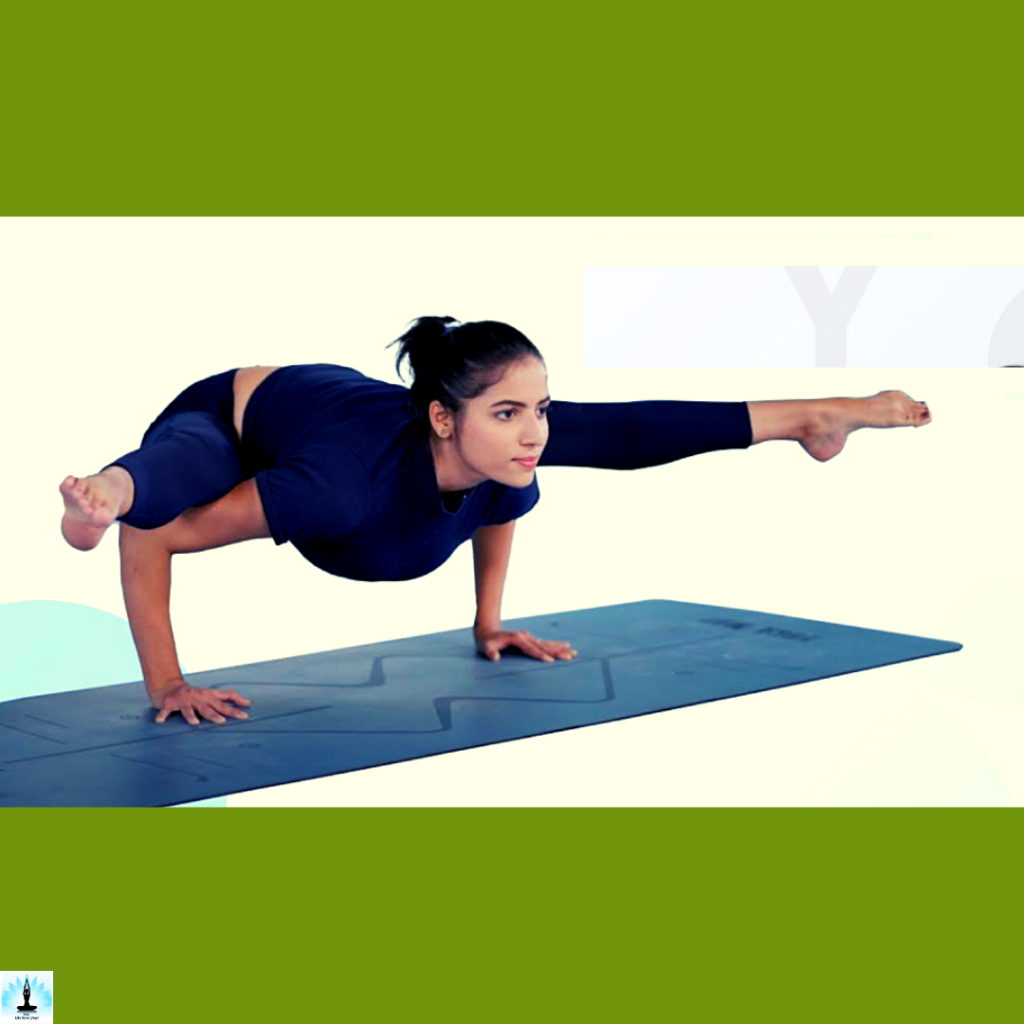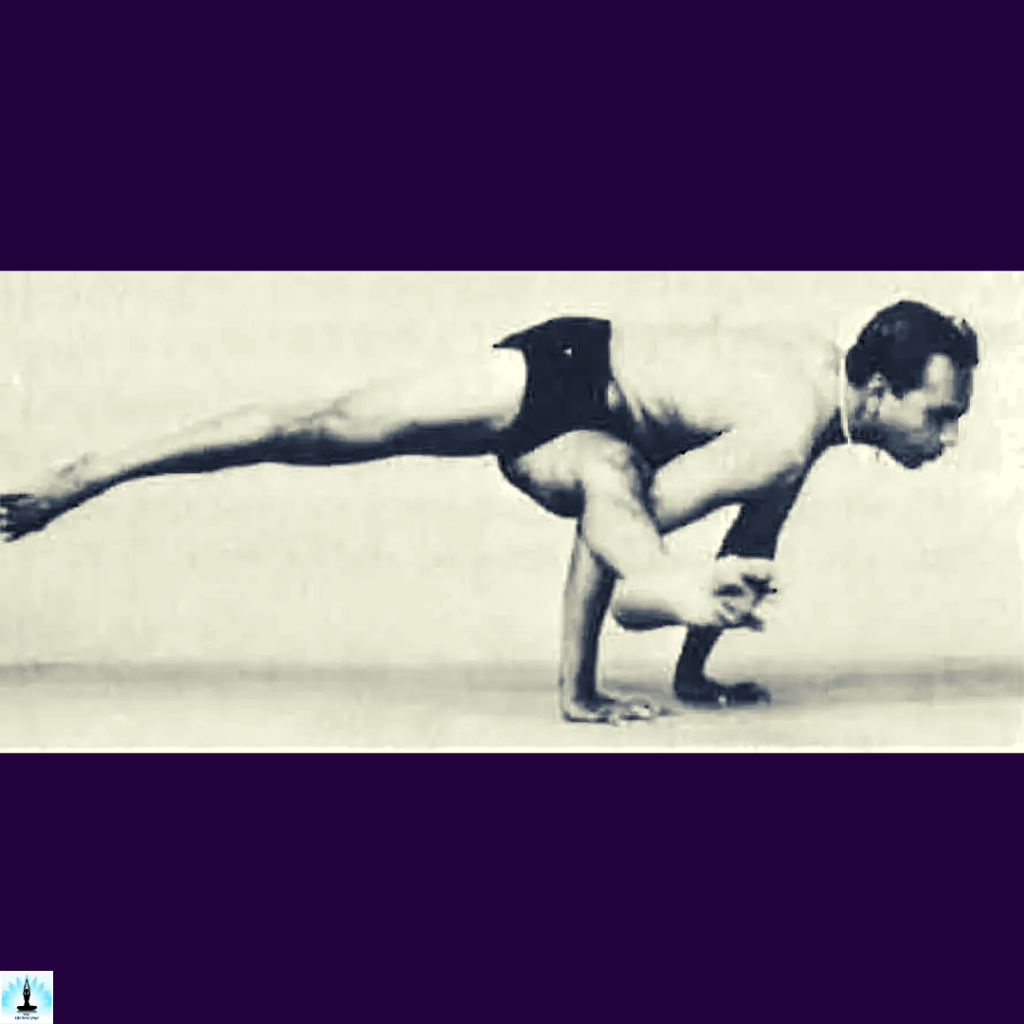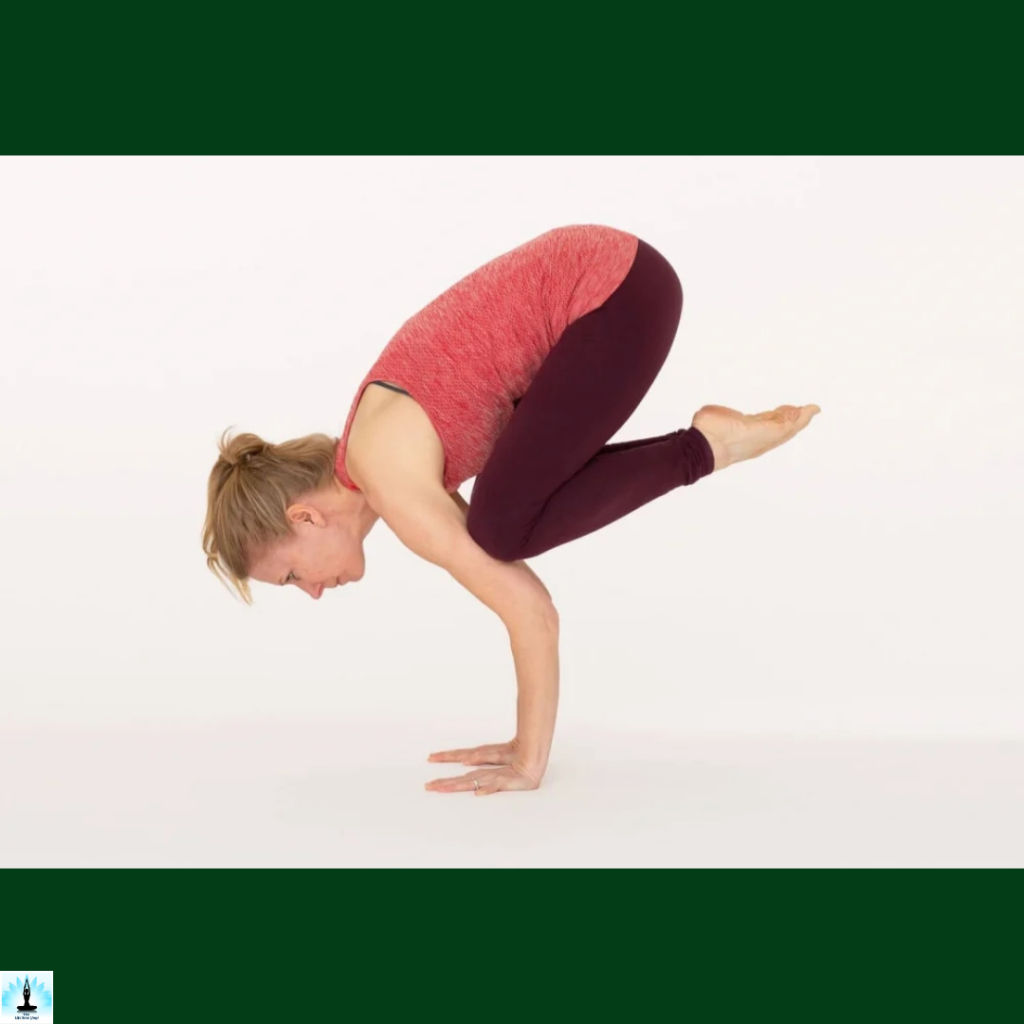Introduction – Top Benefits of Koundinyasana | How to Perform Koundinyasana
Koundinyasana, named after the sage Koundinya, is a challenging and empowering arm balance in the realm of yoga. This asana gives the idea of fusion of strength, flexibility, and concentration, requiring practitioners to balance their bodies on their hands even though maintaining a compact and engaged form. Often practiced in numerous variations, Koundinyasana embodies the essence of the sage it is named after—showing discipline, wisdom, and the harmonious integration of physical and mental elements.
Table of Contents
The Yogic Philosophy of The Koundinyasana

Koundinyasana draws its yogic philosophy from the sage Koundinya, symbolizing the essence of balance, discipline, and spiritual wisdom. As practitioners navigate the intricate arm balance, they embody the sage’s qualities of strength and resilience. The pose encourages individuals to cultivate mental focus, discipline the mind, and harmonize the physical and spiritual aspects of their practice.
Which Chakra is Activated by Practicing Koundinyasana

Practicing Koundinyasana activates the Manipura Chakra, also known as the Solar Plexus Chakra. This energetic center is located in the abdominal region, above the navel, and is associated with personal power, self-confidence, and transformation. The engagement of core muscles and the focused concentration required in Koundinyasana stimulate and balance the energy flow within the Manipura Chakra.
9 Top Benefits of Koundinyasana
Strengthens Upper Body:
Koundinyasana builds strength in the arms, shoulders, and wrists, contributing to enhanced upper body muscular endurance.
Core Engagement:
The pose requires strong core engagement, promoting abdominal strength and stability.
Improves Balance and Coordination:
Practicing Koundinyasana challenges balance and coordination, fostering improved proprioception.
Enhances Flexibility:
The pose involves hip flexion and external rotation, contributing to increased flexibility in the hips.
Focus and Concentration:
Performing Koundinyasana demands focused attention and concentration, promoting mental clarity and mindfulness.
Stimulates Digestive Organs:
The compression in the abdominal region stimulates digestive organs, potentially aiding in digestion.
Advances Yoga Practice:
Including Koundinyasana in a yoga practice challenges practitioners to progress and explore advanced postures.
Strengthens Wrists:
The weight-bearing nature of the pose contributes to strengthening the wrists over time.
Encourages Fearlessness:
Conquering the challenges of Koundinyasana fosters a sense of fearlessness and a willingness to explore the edge of one’s capabilities.
Step-by-Step Instructions of Koundinyasana

These are simple steps and please perform the preparatory poses then you start these steps.
Warm-up:
Begin with a thorough warm-up, including wrist stretches, shoulder rotations, and hip-opening poses.
Mountain Pose (Tadasana):
Start in Tadasana at the top of your mat, grounding both feet and establishing a strong, upright posture.
Chair Pose (Utkatasana):
Bend your knees and lower your hips into Utkatasana, engaging the core and keeping the spine long.
Garudasana Arms:
Bring your arms into Garudasana (Eagle Pose) arms by crossing one elbow over the other, wrapping the forearms, and bringing the palms together.
Lift onto Toes:
Shift your weight onto your toes, lifting the heels off the ground while maintaining the integrity of Garudasana arms.
Transition to Arm Balance:
Lean forward slightly and shift the weight onto your hands. Place the hands on the floor shoulder-width apart, fingers spread wide.
Hook One Leg:
Begin to hook one knee onto the upper arm, near the armpit, while maintaining the crossed-arm position.
Engage Core Muscles:
Engage your core muscles deeply to create stability. Lift the opposite foot off the floor, balancing on the standing leg.
Extend the Bent Leg:
Gradually extend the bent leg straight out to the side, finding balance in the arm balance.
Straighten Both Legs:
With control and strength, work towards straightening both legs, forming a parallel line with the extended leg.
Gaze Forward:
Keep your gaze focused on a point ahead to aid in balance and concentration.
Hold and Breathe:
Maintain the pose for a few breaths, finding stability and ease in the arm balance.
Exit Mindfully:
To release, lower the extended leg back to the floor, return to Utkatasana briefly, and then stand tall in Tadasana.
Advanced Variations of Koundinyasana
Eka Pada Koundinyasana (One-Legged Koundinyasana):

In this advanced variation, practitioners focus on balancing in Koundinyasana with one leg extended straight out in front of them while the other remains tucked. This variation demands increased strength, flexibility, and refined control.
Dwi Pada Koundinyasana (Two-Legged Koundinyasana):

Dwi Pada Koundinyasana takes the challenge a step further by extending both legs straight out in front while maintaining the arm balance. This variation requires a high level of core strength, balance, and mastery of the foundational pose.
Koundinyasana II (Flying Splits Koundinyasana):

Koundinyasana II combines the arm balance with a challenging split position. In this variation, one leg extends straight back while the other extends forward, resembling a flying split. Achieving this variation demands advanced flexibility in the hips and hamstrings, along with refined arm balance skills.
Therapeutic Applications of Koundinyasana
Koundinyasana offers therapeutic benefits by strengthening the arms, wrists, and core muscles. The pose enhances overall upper body strength and engages the abdominal muscles, potentially aiding in the improvement of posture.
Poses Related to Koundinyasana
Preparatory Poses of Koundinyasana
Crow Pose (Bakasana):

Crow Pose, or Bakasana, is an excellent preparatory pose before attempting Koundinyasana. It helps build arm strength, balance, and familiarity with the sensation of balancing on the hands.
Side Crow Pose (Parsva Bakasana):

Side Crow Pose, or Parsva Bakasana, is another beneficial pose to practice before Koundinyasana. This variation involves twisting the torso while maintaining the arm balance, helping to enhance core engagement and balance preparation.
Follow-up Poses of Koundinyasana
Ashtavakrasana (Eight-Angle Pose):

Following Koundinyasana, Ashtavakrasana is a natural progression that further challenges arm strength and balance. This advanced arm balance involves the crossing of legs and arms in a way that requires precision and control.
Beginner’s Tip of Koundinyasana
For beginners exploring Koundinyasana, it is essential to develop a strong foundation in arm balances and core strength before attempting this pose. Start with preparatory poses that build wrist and arm strength, such as Plank and Crow Pose. Utilize props, like yoga blocks, to provide support and gradually work towards lifting the feet off the ground. Engage the core muscles and maintain a steady breath to create a stable foundation.
Contraindications and Cautions of Koundinyasana
Individuals with wrist injuries, carpal tunnel syndrome, or existing shoulder issues should approach Koundinyasana with caution. Those with lower back problems or a history of herniated discs should avoid the pose or seek modifications. Pregnant women are advised to skip advanced arm balances like Koundinyasana due to the potential strain on the abdominal muscles.
FAQ’s on Koundinyasana
Q: Is Koundinyasana suitable for beginners?
A: Koundinyasana is an advanced pose that demands significant arm strength, core engagement, and balance. Beginners are advised to approach this pose gradually, starting with foundational arm balances and seeking guidance from an experienced yoga instructor.
Q: How can I improve my arm strength for Koundinyasana?
A: To enhance arm strength for Koundinyasana, include exercises like Plank, Chaturanga Dandasana, and specific arm-strengthening poses in your practice. Consistent practice of these poses builds the necessary strength for successful execution of Koundinyasana.
Q: Can Koundinyasana be practiced during pregnancy?
A: Pregnant individuals are advised to avoid advanced arm balances like Koundinyasana due to the increased risk of falls and strain on the abdominal muscles. It is crucial to prioritize the safety of both the practitioner and the baby during pregnancy.
Q: What should I do if I feel wrist pain in Koundinyasana?
A: If experiencing wrist pain, practitioners can modify by using yoga blocks under the hands or practicing wrist-strengthening exercises. It is essential to listen to the body, avoid overexertion, and consult with a healthcare professional if pain persists.
Q: How long does it take to master Koundinyasana?
A: The time to master Koundinyasana varies for each individual based on factors like strength, flexibility, and consistent practice. Progression depends on regular practice, focusing on building strength and refining balance gradually over time.
Q: Can Koundinyasana help with stress relief?
A: While the primary focus of Koundinyasana is physical strength and balance, the concentration and mindfulness required during the practice may contribute to stress relief. The meditative aspect of mastering challenging poses can promote a sense of calm and mental clarity.
Q: Are there modifications for individuals with limited hip flexibility?
A: Individuals with limited hip flexibility can modify Koundinyasana by focusing on the arm balance aspect without extending the legs fully. Gradual improvement in hip flexibility through hip-opening poses can aid in progressing to the full expression of the pose.
Q: Should I practice Koundinyasana on both sides equally?
A: Yes, it is essential to practice Koundinyasana on both sides to ensure balance and symmetry in the body. This helps maintain strength and flexibility evenly and prevents muscular imbalances.
Q: Can Koundinyasana be included in a daily yoga routine?
A: While Koundinyasana is an advanced pose, experienced practitioners may choose to include it in a well-rounded yoga routine. However, it is crucial to balance the practice with other poses and focus on proper warm-up and cooldown to prevent injuries.
Q: How can I overcome fear while attempting Koundinyasana?
A: Overcoming fear in Koundinyasana involves gradual progression, practicing with a spotter or against a wall for support, and cultivating mental focus. Breaking down the pose into manageable steps and celebrating small achievements can build confidence over time.
Conclusion
In conclusion, Koundinyasana stands as a apex of strength, balance, and focused determination within the realm of yoga. Named after the sage Koundinya, this advanced arm balance challenges practitioners to transcend physical limitations, cultivating a union of body and mind. As individuals embark on the journey of mastering Koundinyasana, they are invited to embody the qualities of the sage—discipline, wisdom, and the ability to gracefully navigate challenges.
References
- Sjoman, Norman E. (1999) [1996]. The Yoga Tradition of the Mysore Palace. Abhinav Publications. pp. 100–101. ISBN81-7017-389-2.
- Iyengar 1979, pp. 330–335.
- Sinha, S. C. (1996). Dictionary of Philosophy. Anmol Publications. p. 18. ISBN 978-81-7041-293-9.
- Sjoman, Norman E. (1999) [1996]. The Yoga Tradition of the Mysore Palace. Abhinav Publications. pp. 100–101. ISBN 81-7017-389-2.
- Iyengar, B. K. S. (1979) [1966]. Light on Yoga: Yoga Dipika. Thorsons. pp. 389–399. ISBN 978-1855381667.
- Lidell, Lucy; The Sivananda Yoga Centre (1983). The Book of Yoga: the complete step-by-step guide. Ebury. pp. 132–133. ISBN 978-0-85223-297-2. OCLC 12457963.
- Mehta, Silva; Mehta, Mira; Mehta, Shyam (1990). Yoga: The Iyengar Way. Dorling Kindersley. p. 143. ISBN 978-0-86318-420-8.
